An introduction to salty liquorice, an ‘acquired taste' that is nevertheless hugely popular in the Nordic region. Plus, read on for our verdict on the best ones to try.
Liquorice in itself is not uncontroversial. Typically, people either hate it or love it. But someone, somewhere, decided liquorice would be better if it first hit you with a wall of bitter saltiness.
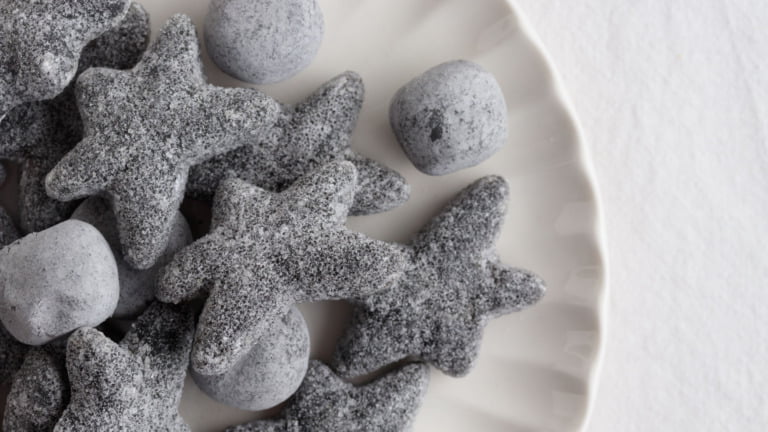
When we say ‘somewhere', we mean in Northern Europe. Liquorice, both in its traditional and its salty variants, is most popular in countries like the Netherlands, Finland, Sweden, Norway and Denmark, as well as in Northern Germany.
To most people, candy, or sweets, in the UK, are… well… sweet. Sure, there are exceptions like salt caramel but sweets are, as a rule, sweet. Salty liquorice is its own category of exceptions: available in countless varieties, flavours and textures.
So whether you’re tempted to give it a try or just morbidly curious, join us as we tell you everything you need to know–and more–about salty liquorice, including which ones we think are best.
What is liquorice?
First let’s agree about what liquorice is and what it is not. Ask someone from Canada or the United States if they like liquorice, and they may answer something like “yes, but only the red one”.
What is the best salty liquorice in Norway? Read on for our verdict!
Tell a Scandinavian that you like ‘red liquorice' and you’ll get a funny look. The reason for this is that in most of the world, liquorice (also spelt “licorice”) refers to candy flavoured with liquorice root extract.
The red liquorice found in North America has other, non-liquorice root-based flavourings such as strawberry, cherry, raspberry and even cinnamon. It resembles actual liquorice candy only in shape and texture.
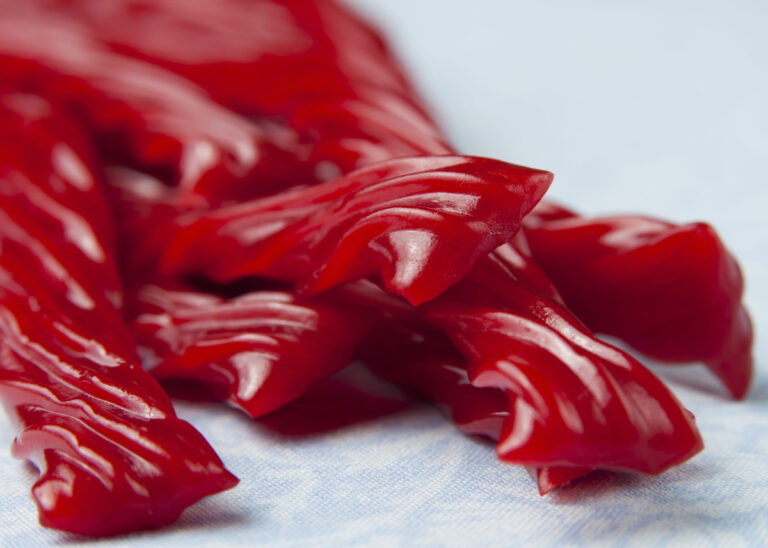
For the purpose of this article, when we talk about liquorice, we mean ‘black liquorice', getting its characteristic love-it-or-hate-it flavour directly from the liquorice root.
The compound giving liquorice root its flavour is called glycyrrhizin, and also gives the plant medicinal properties.
Salmiakk: Liquorice with a kick
In Norway, salt liquorice is called either saltlakris or salmiakk. Now the funny thing is that salmiakk is also a word for ammonia, a colourless, toxic chemical used as a refrigerant, a cleaning agent, and a component in the production of fertilisers, plastics, and textiles.
Read more: The Best Chocolate Bars in Norway
When I first saw a bag of sweets with the word “salmiakk” on it, I thought “how amusing. Ammonia-flavoured candy”. I naturally assumed that the word was being used figuratively, since ammonia is toxic and sweets are meant to be eaten.
It was only several years later that I discovered that salmiakk candy is indeed flavoured with ammonium chloride – essentially ammonia in salt form. You have probably heard of ammonium salts before, at least indirectly.
Remember the smelling salts used to revive fainting ladies in costume dramas? Those are ammonium salts.
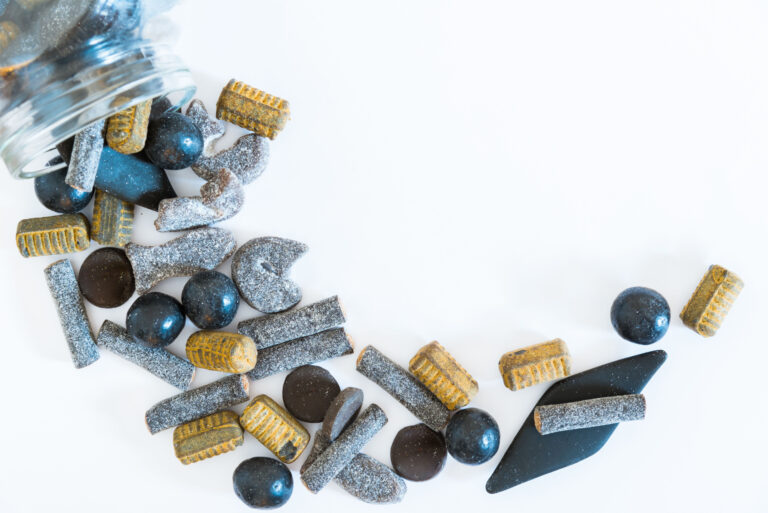
The difference is that in Jane Austen novels, ammonium salts are just briefly placed under the fainting person’s nose; not actually ingested. So how can this be? How can a known toxic compound be used – and widely loved – in candy?
Liquorice-based cough syrup
As we mentioned before, liquorice root has been used in medicine for ages. It has antibacterial properties, and can help alleviate symptoms like coughing and digestive issues.
This led to pharmacies concocting liquorice-based cough syrups. Sometimes, these syrups would also contain ammonium chloride, because of its expectorant properties.
The running theory is that this is how the odd flavour combination was born. The complex, slightly bitter taste of liquorice, combined with the burning-tingling sensation of ammonium chloride, is an acquired but apparently addictive taste.
So is it toxic or not?
The short answer is yes. The ammonium chloride used to flavour salty liquorice is toxic.
The long answer is that yes, it is toxic, but so are many other things that we routinely ingest (like alcohol). In small enough doses, the harm is negligible, relatively speaking.
Still, the EU proposed in 2012 banning the use of more than 3 grams of ammonium chloride per kilo of food product. Salty liquorice contains 70 grams per kilo of the stuff, so it would have effectively been banned.
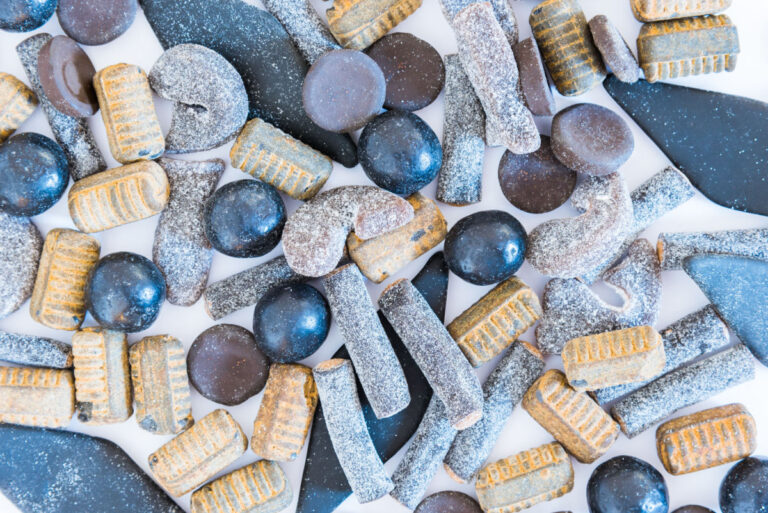
Strong protests by Nordic countries, sweets manufacturing companies and industry organisations led to the EU dropping the proposed regulation. Salty liquorice is safe from regulators… for now.
On a side note: liquorice root also has toxic effects at large doses. Consumed in large amounts or over long periods of time, it can cause high blood pressure. It is also known to interfere with various medications processed by the liver, including several painkillers.
Salty liquorice reviews: best liquorice in Norway
To pen this article, I have embarked on a journey of discovery into the heart of Norwegian cuisine, that bitter and salty bastion of bravado: salt liquorice.
I say bravado because Norwegians (and Scandinavians) are very aware that their love of liquorice is not shared by everyone, and will routinely serve salty liquorice to unsuspecting foreigners for the purpose of observing their predictably hilarious reaction.
Now, as a Canadian who would rather eat toothpaste than liquorice, I had to call in reinforcements. Enter my accomplice: a genuine liquorice-loving Norwegian who helped navigate the treacherous, salty waters of this review.
Tyrkisk Peber
First on our list is Tyrkisk Peber, a Finnish favourite. This two-stage taste explosion begins as a hard candy shell housing a powder liquorice centre.
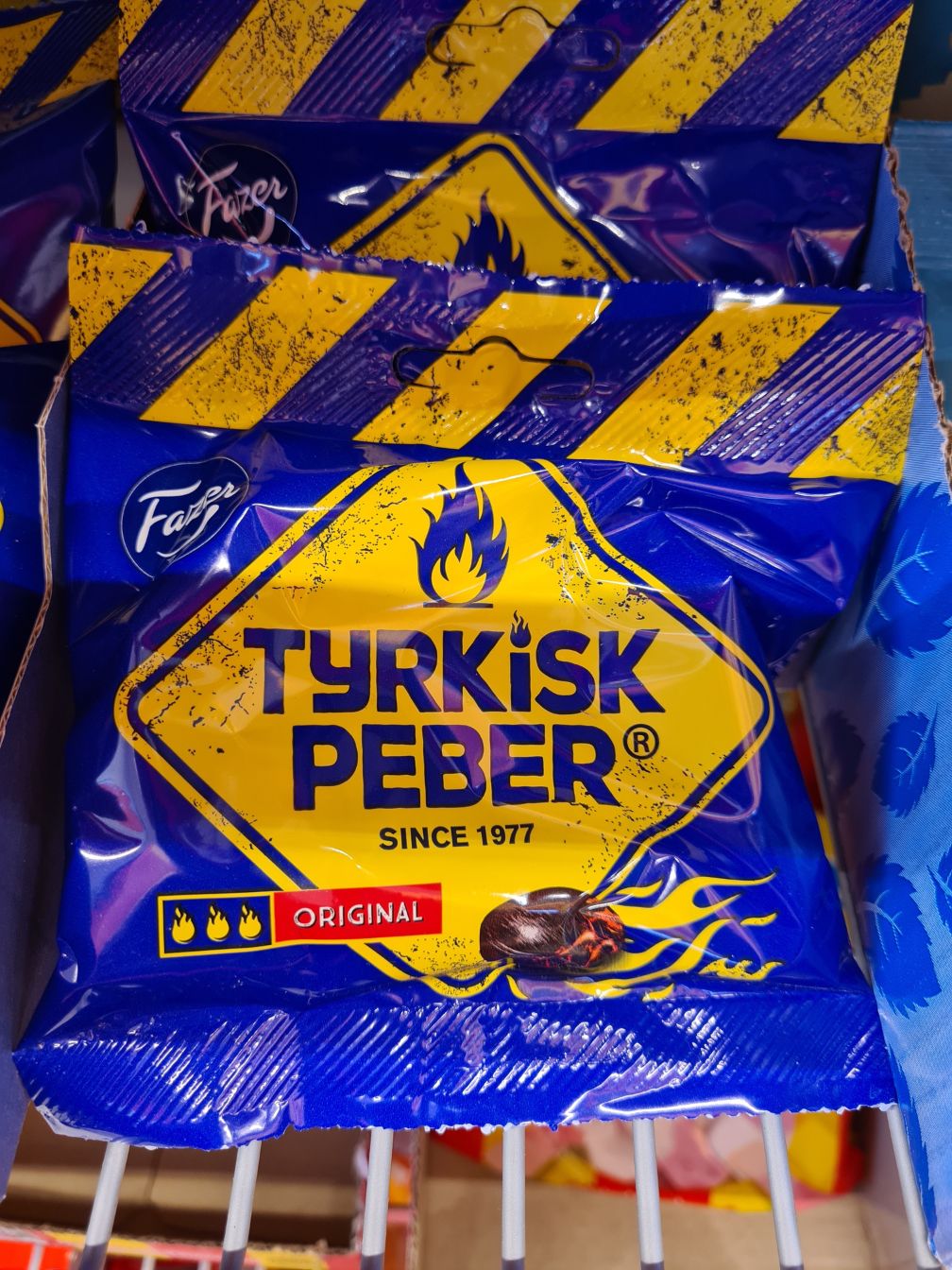
At first, you're hit with the one-two punch of salt and liquorice. But then comes the second act: liquorice paired with a surprising pepper-hot quality.
Fans have been known to crush this candy into a powder to dissolve in gin or vodka, a hack so popular it inspired the manufacturer to release a syrup and a Tyrkisk Peber flavoured liquor.
Flavour profile: intense, spicy.
Lakriskule salmiakk
Next up is Lakriskule salmiakk, a relative newcomer to the salty liquorice scene. These orbs of joy come in a range of variations, from bulk bargain buys like this one to chocolate-coated luxury versions sold in upscale airport shops.
The liquorice shell is a soft, liquorice powder-coated treat, while the centre is a softer, almost liquid core that's more about texture than taste.
Flavour profile: rich, distinctive.
Salte UFO
This one figures among the classics. Salte UFO is a hard candy with a salty powdered liquorice coating. The difference between coating and candy mostly boils down to texture in this case.
It has been around for a long time and constitutes a trip down memory lane for many Norwegians.
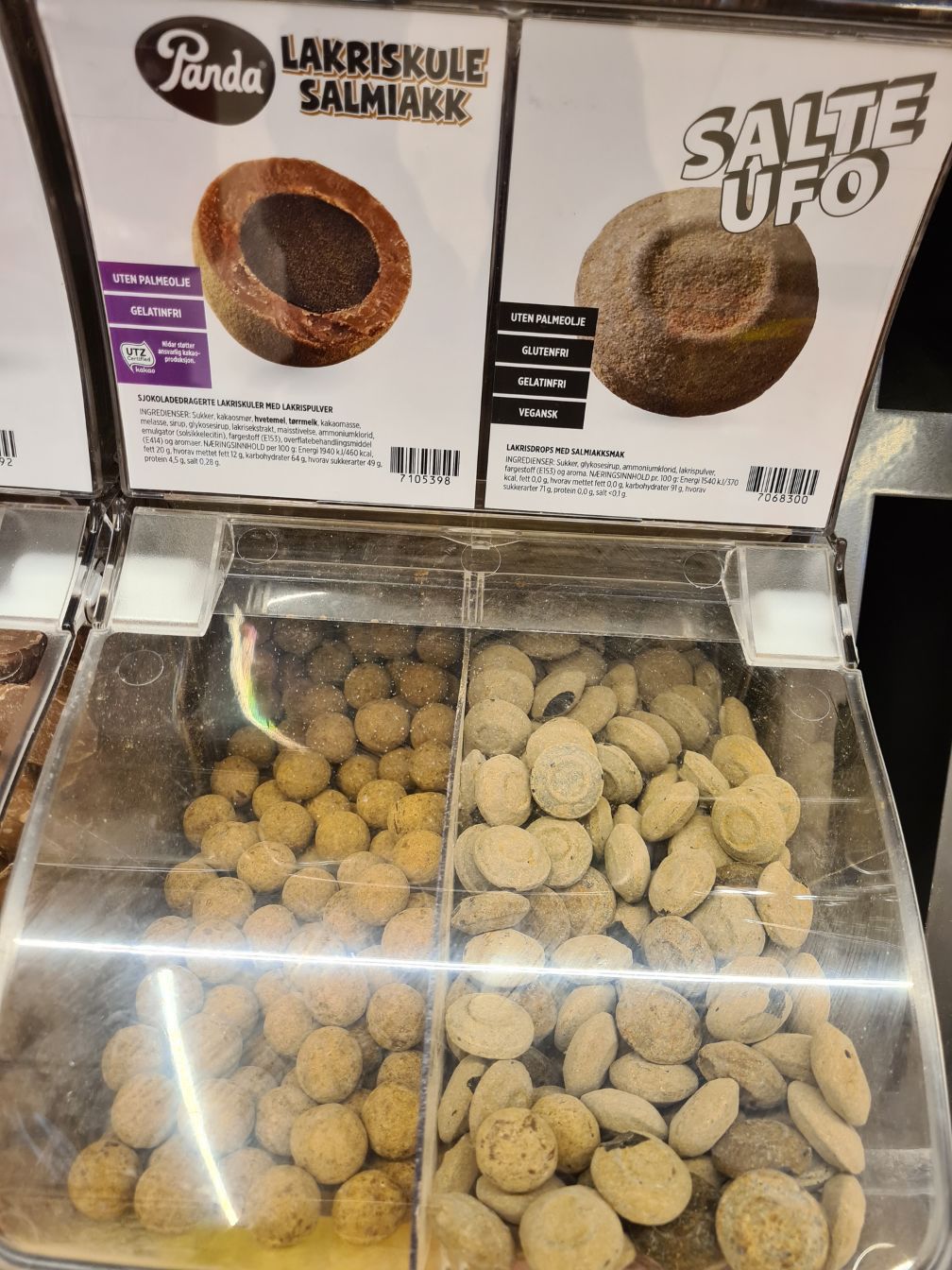
Flavour profile: slightly salty, earthy.
Dunder salt
With its eerily Japanese anime-looking mascot, Dunder Salt competes closely with Salte UFO. They are so similar that we can just leave it at that.
Flavour profile: slightly salty, earthy.
Laban salte rockere
Laban salte rockere takes the classic ‘seigmenn' fruit jellies and gives them a salty liquorice makeover. These are also gluten free, if the thought of ingesting gluten worries you more than the toxicity of liquorice and ammonium salt.
Flavour profile: sweet, aromatic.
Lakrisgutta sopelim
Next, we have Lakrisgutta sopelim – a nearly-identical variation by a competing brand is sold under the name Heksehyl. This soft salty liquorice with a sugar coating hides a doughy, cookie-like centre with a slightly different liquorice flavour than the outside. It is that contrast in texture and flavour that makes this one so great.
Flavour profile: rich, pungent.
Salte skaller
These coated jelly skulls look similar to the outside of the Lakrisgutta sopelim/heksehyl but trust us, they're as different as night and day. The intense saltiness of Salte skaller pushes the liquorice flavour to the backseat.
Flavour profile: intense, bitter.
Salt skum
I will avoid any obvious scum jokes and tell you that this one is a fluffy variant of Salte skaller. Whereas Salte skaller has a texture reminiscent of wine-gums, Salt skum is leaning towards marshmallow territory.
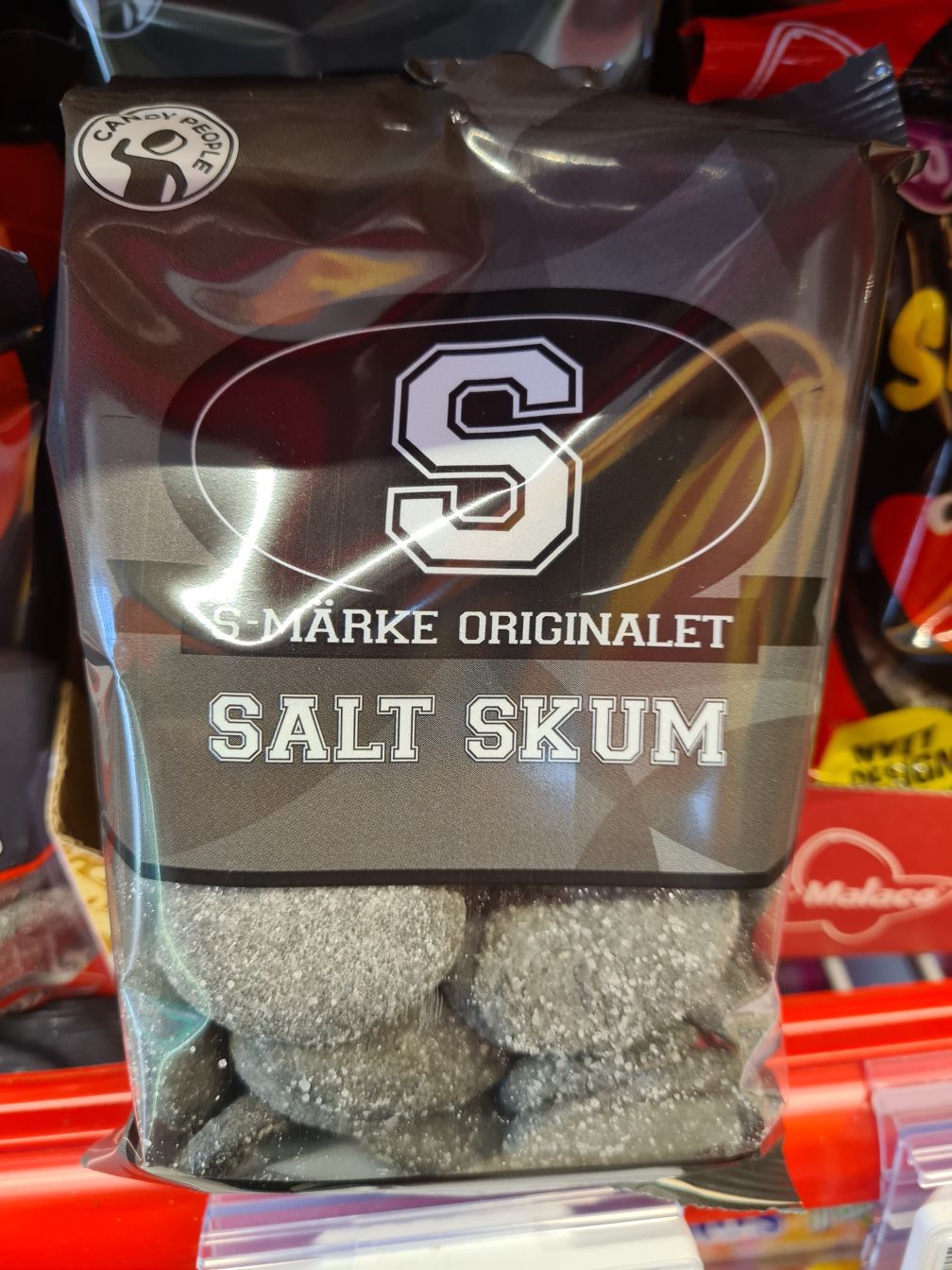
Flavour profile: bitter, rich.
Salt sild
Salt sild combines salty and sweet flavours in a way that sticks around, quite literally, to your teeth. “Sild” means herring in Norwegian, and the non-liquorice, fruity, variation of these candies, known as “Sur sild”, pays homage to their pickled namesake.
Flavour profile: bold, intense.
Rustne spiker
Rustne spiker (literally: rusty nails) is a unique, brittle hard candy with a powdery coating. The mellow, smooth flavour slowly unfolds as you suck on it, creating cracks that eventually make the candy break apart.
But be warned, this means it develops sharp edges as it dissolves, which contrast with its mellow and smooth flavour, making it the metal hand in a velvet glove of the salty liquorice world.
Flavour profile: lingering, smooth.
Kick sea salt
Originally a sweet liquorice that got a salty makeover, Kick sea salt features salt crystals added directly to the liquorice instead of merely coating it. This produces a mouth-watering effect that tickles the Norwegian love of sweet-salty snacks.
The texture? Imagine a liquorice taffy that you can stretch at room temperature. For those looking to try the non-salty predecessor, watch out for the black and red packaging.
Flavour profile: mouth-watering, satisfying.
Diplom-is salte lakris-flak
Next, we venture into uncharted territory with Diplom-is salte lakris-flak, salty liquorice sprinkles designed for ice cream. Soft-serve in Norway is often dipped in sprinkles. Now you can upgrade your ice cream with a bold salty liquorice topping. Think of it as the rainbow sprinkles’ evil cousin.
Flavour profile: very salty, so sprinkle lightly.
Diplom-is Royal lakris
If you want your ice cream pre-liquoriced, that is also possible. This ice cream features liquorice fudge, salty liquorice “pearls” and a salty liquorice sauce.
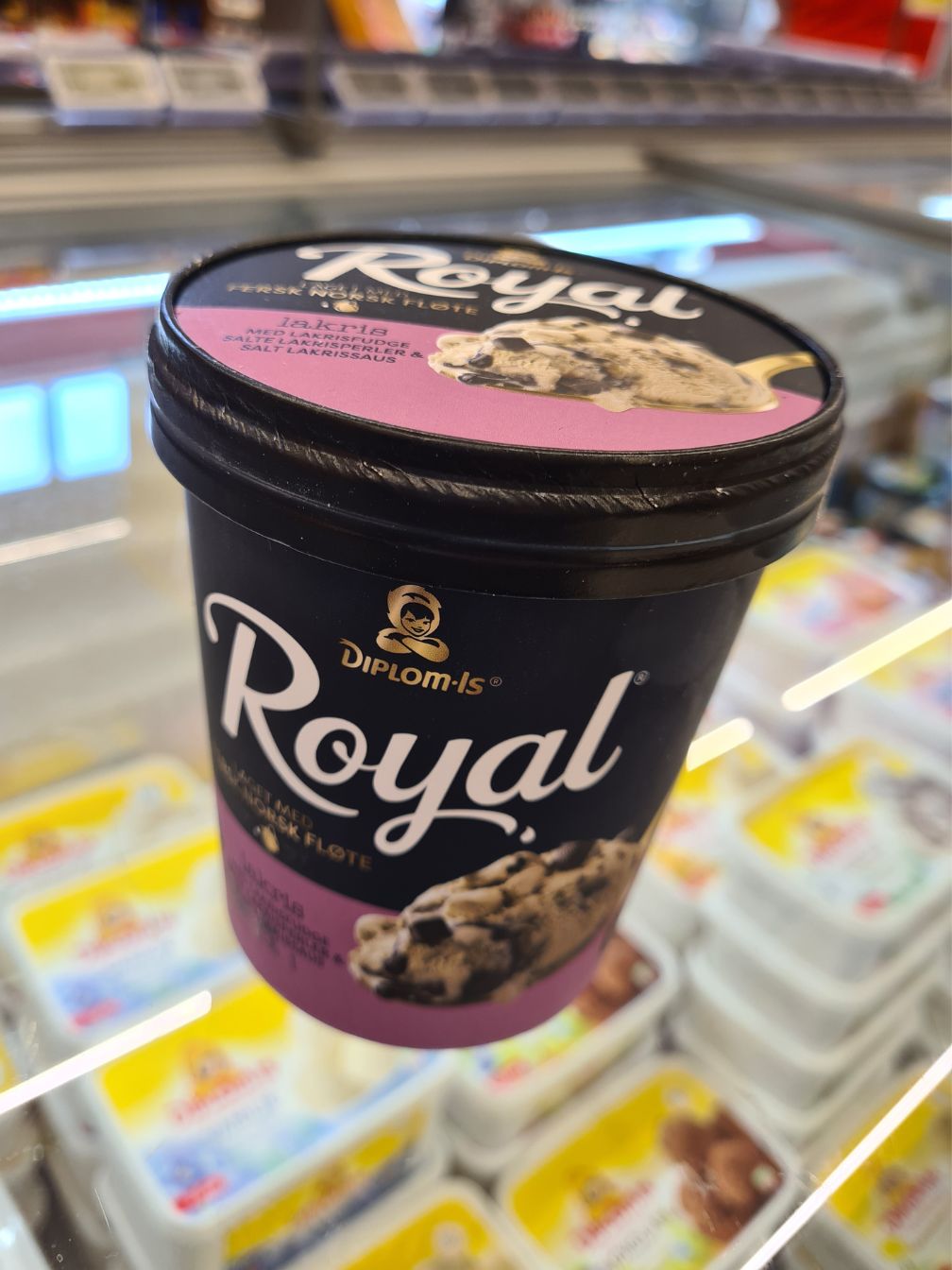
Our Norwegian subject insists that we point out that the liquorice ice cream manufactured by competing company Hennig Olsen is vastly superior.
Flavour profile: sweet-salty.
Panda soft & fresh (not salty)
If you’re new to the liquorice game and want to dip your toes before diving in, Panda soft & fresh liquorice is your go-to. It's a sweet liquorice with no ammonium salt, and melts in your mouth while still retaining a bit of chewiness.
For our friends across the pond, think of it as a softer version of Twizzlers cut into bite-sized pieces. Some fans prefer to let these air dry for a harder outside, adding a slight crunch to the mix.
Flavour profile: rich, earthy.
Skipper Lakrisbåter (not salty)
Another, even more beginner-friendly gateway drug into the world of liquorice: Skipper Lakrisbåter is a sweeter and more gummy-like cousin of the Panda liquorice. It features a dry outer shell that cracks to reveal a jellylike centre. And yes, they do look exactly the same as the alien spaceships from the blockbuster movie Arrival.
Flavour profile: mellow, aromatic.
And there you have it, folks! A whirlwind tour of Norway's salty liquorice landscape. While not everyone's cup of tea, these offerings give a unique glimpse into the daring and diverse world of Norwegian sweets.
So, whether you're a liquorice lover, a curious foodie, or just an adventurer looking to try something new, why not give it a shot? You never know, you might just find your new favourite treat!
Are you a fan of salty liquorice? Let us know your thoughts and your favourites in the comments below.

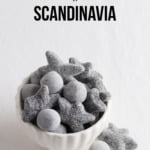

On a recent Norway bus tour, I purchased some salty licorice thinking I would love it as I was a black licorice lover. My first bite – well, it didn’t stay in my mouth very long! SO, what to do with this uneatable bag of licorice! I tho’t I’d be generous and pass it along to my bus mates (without letting them know who passed it). As it traveled around the bus, I laughed inwardly at the gagging sounds I heard and the uncomplimentary comments that were made. I never ‘fessed up.
I always bring home ‘foreign candy’ to my grandkids when I travel, so salty licorice came home with me. Some liked it, some didn’t, some wouldn’t even try it. But I have and I won’t again. Thanks for the fun article.
skipper lakris båter er BEST
Totally addicted to salty liquorice. I knew it was unhealthy, but never kicked the habit. Been eating it for nearly 50 years on almost a daily basis since my Netherlands friend brought it to school….
My favourites are something called zalte griotten and are more a Netherlands variant. They are oatmeal-coloured square, marshmallow-like, chewy, sugar-coated cubes, flavoured like salty liquorice. They are also available in Sweden as ‘bläckfisk’ and are the extruded shape of an octopus.
Turkish peber also make a hexvrål variant…..salty liquorice in tube-like inch long lengths, filled with a softer, light brown version of peppery salmiak.
….and fish-shaped, black, chewy salty liquorice.
I am hoping your Norwegian friend can help me with a salt lakrids suggestion. I really love salty and soft liquorice. I got some salt sild at a pick n mix store that was so strong and salty and perfect, but I’ve discovered that all brands are not equal. I got Katjas salt sild and they were really disappointing. I actually like the ones made by Nordthy, but their mix has soft gummies and some that are like trying to chew rocks. Who do you think makes the strongest soft gummy salt liquorice?
Hello,
I asked him for you. Here’s his reply:
Several things come to mind.
Two products from Malaco
1) Salt sild
2) Godt og blandet, super salt
Then you have the Salt skum from S-märke.
Lastly you have Salte skaller from Nidar (in bulk), which I love. There’s a version from Brynild (in bag) that looks similar, but I haven’t tried it (yet).
My favorite is Salmiak Buttons made by Meenk, a Dutch company. At 4% salmiak salt with real licorice extract, they have a good balance. And the texture is somewhat chewy, but hard enough to suck on as well. I’ve also tried Dubbel Zout with 7% ammonium chloride, and those pack a pretty good punch. I don’t eat them often but I like one occasionally. I’m born and bred in America, but I’ve always loved licorice. It’s hard to find the good stuff, and the only way to buy the salty licorice is on the internet.
I loved this article! My father emigrated to the US, and when my children were elementary school age, we took them to Norway to meet cousins. My cousin bought some for her son’s, who loved it. Ours stayed in our mouths for one hot second before flying out the car window.
Definitely an acquired taste and a cultural love.